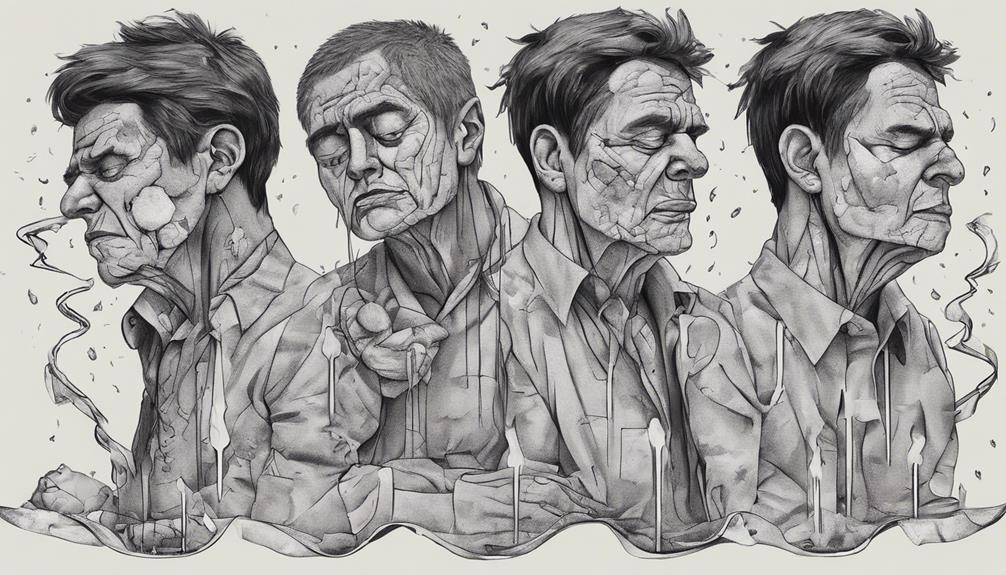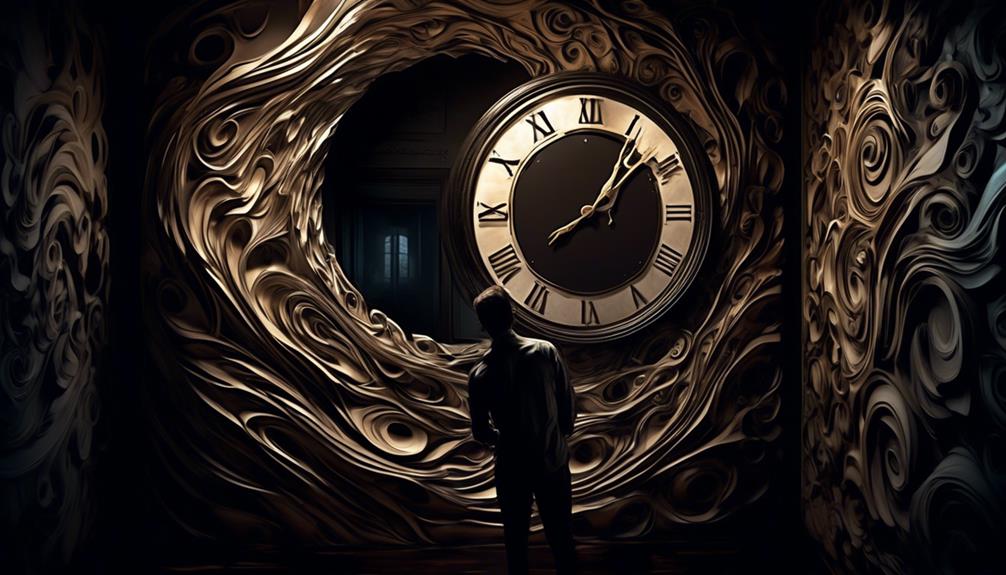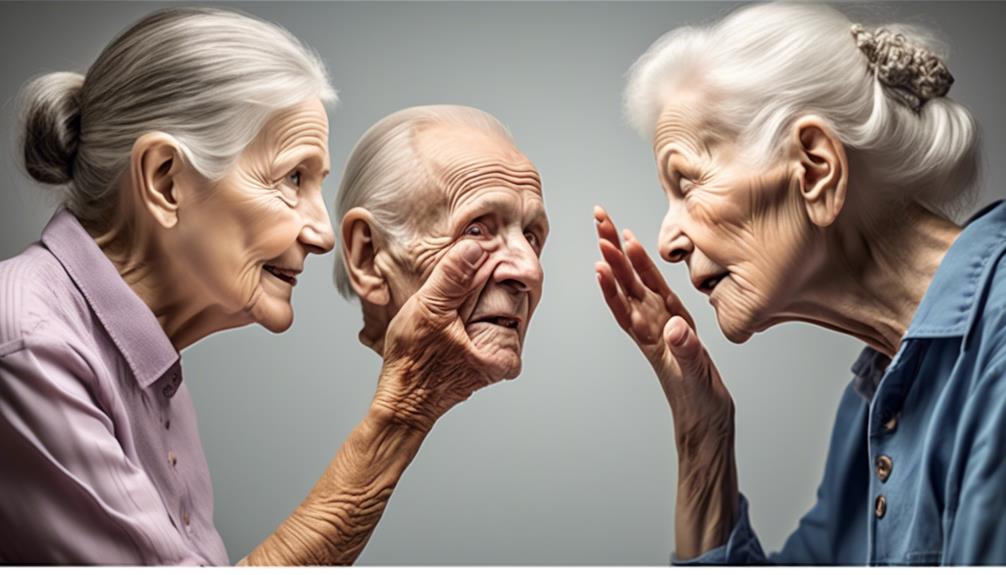Picture yourself in a place where the walls appear to murmur confidential secrets just for you, or witnessing shadows flitting at the edge of your sight as if they possess their own existence. Hallucinations, veiled in enigma and seduction, can provide a peek into a realm where the boundaries between actuality and fantasy fade.
But what are these experiences truly like? As we explore the various types of hallucinations and their impact on daily life, we may uncover a fascinating realm that challenges our understanding of perception and cognition.
Key Takeaways
- Hallucinations can involve seeing, hearing, smelling, touching, or tasting things that aren't there.
- Mental health conditions, neurological disorders, substance abuse, and medication can cause hallucinations.
- Hallucinations can disrupt daily life, affecting focus, relationships, work, and overall quality of life.
- Understanding the causes and seeking timely medical advice is crucial for managing hallucinations effectively.
Types of Hallucinations
Hallucinations manifest in various forms, categorized into distinct types based on sensory experiences. Visual hallucinations involve seeing things that aren't present in reality, which can range from simple shapes to detailed images. Auditory hallucinations, on the other hand, pertain to hearing sounds or voices that others don't hear. These sensory distortions can be incredibly vivid and realistic, creating a profound impact on an individual's perception of the world.
The causes of hallucinations are varied and can stem from mental health conditions, neurological disorders, substance abuse, or even certain medications. These experiences aren't real, yet they feel authentic to the person experiencing them, blurring the line between what's perceived and what's actually happening.
Understanding the types of hallucinations someone may be experiencing is crucial in determining the appropriate course of action to address their mental health needs. By delving into the intricacies of these sensory phenomena, healthcare providers can better assist individuals in navigating the complexities of mental illness.
Sensory Perceptions and Hallucinations
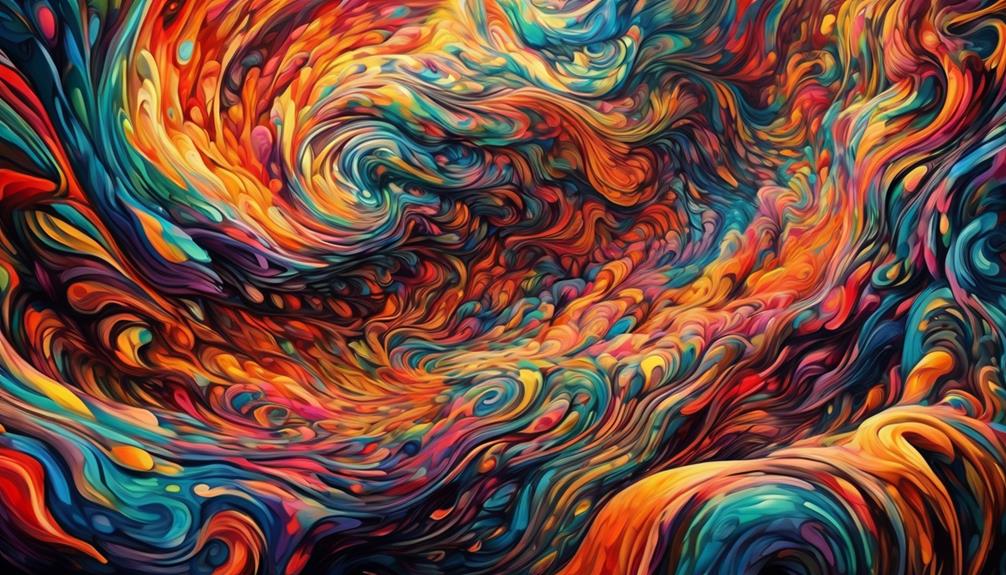
Sensory perceptions play a crucial role in understanding the nature and impact of perceptual distortions experienced by individuals with hallucinations. When considering hallucinations, particularly visual hallucinations, various factors come into play:
- Temporal Lobe Involvement: The temporal lobe is commonly implicated in the occurrence of visual hallucinations.
- Medical History Examination: Understanding the individual's medical history is essential to uncover any underlying conditions that may contribute to hallucinations.
- Physical Examination: A thorough physical exam can reveal clues that aid in diagnosing potential causes such as brain cancer or epileptic seizures.
- Psychiatric Evaluation: Assessing for mental conditions helps in determining if the hallucinations stem from psychological factors.
Impact of Hallucinations on Daily Life
Having explored the sensory perceptions and underlying factors associated with visual hallucinations, it's imperative to now investigate the tangible repercussions that these perceptual distortions impose on individuals' daily functioning.
Hallucinations can profoundly impact people's daily lives, causing disruptions in various aspects of functioning. These disturbances can range from challenges in maintaining focus and concentration to difficulties in distinguishing between what's real and what's a creation of the mind.
The impact of hallucinations on daily life can extend beyond the individual experiencing them, affecting relationships, work performance, and overall quality of life. Understanding the causes of these hallucinations, which can stem from medical conditions, mental health disorders, or alterations in brain functioning, is crucial in determining the appropriate diagnosis and treatment.
Intriguing World of Hallucinations
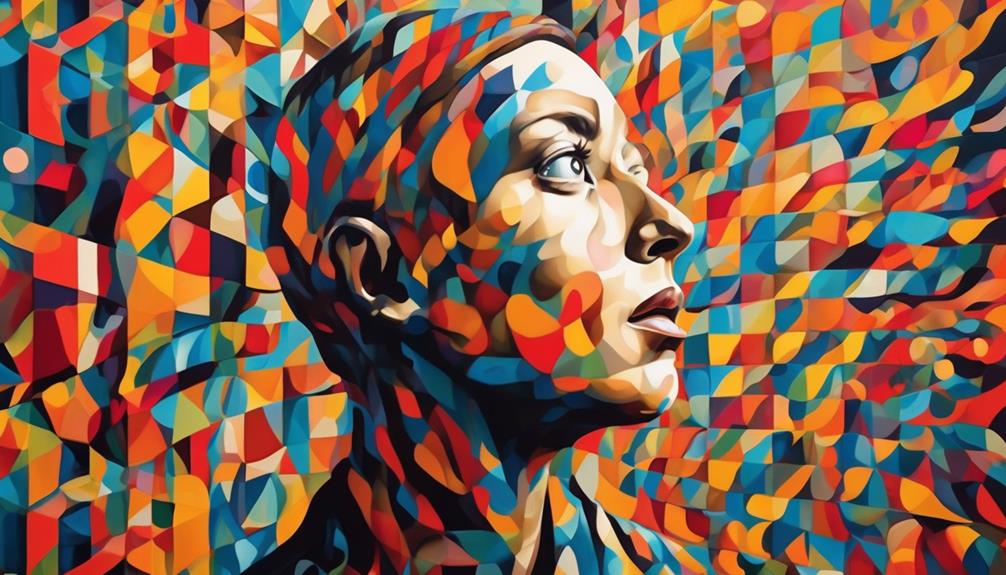
Exploring the intricate phenomena of altered perceptions reveals a nuanced understanding of the intriguing world of hallucinations. When delving into this realm, one encounters a variety of experiences that can both captivate and perplex the mind.
Here are four intriguing aspects to consider:
- Types of Hallucinations: Understanding the different types, such as visual, auditory, olfactory, and tactile hallucinations, provides insight into the complexity of these phenomena.
- Temporal Lobe Involvement: Examining the role of the temporal lobe in hallucinations sheds light on the neurological underpinnings of these experiences.
- Differential Diagnosis Challenges: Differentiating between hallucinations caused by psychiatric conditions, medical issues, or substance use requires a meticulous approach to arrive at an accurate diagnosis.
- Importance of Seeking Medical Advice: Given the potential implications for mental health and overall well-being, seeking timely medical advice is crucial when experiencing hallucinations.
Experiencing a Hallucination
Continuing our examination of the intriguing world of hallucinations, we now shift our focus to the firsthand experience of encountering a hallucination. When you experience hallucinations, you may perceive things that aren't actually present. These sensory experiences can involve any of your senses, with visual hallucinations being a common type. These visions can range from simple shapes to intricate scenes. Auditory hallucinations, where you hear sounds or voices, are also prevalent. Additionally, taste hallucinations can make you perceive flavors without any external source. These experiences are linked to activity in a part of your brain called the temporal lobe.
If you find yourself seeing things or experiencing hallucinations, it's crucial to seek guidance from a medical professional. They can assist in determining the underlying cause, providing the necessary diagnosis and treatment. Understanding the nature of hallucinations and receiving appropriate care can help in managing these experiences effectively.
Frequently Asked Questions
What Does a Hallucination Feel Like?
Hallucinations can feel incredibly real, as if our senses are being deceived. They might involve seeing, hearing, feeling, tasting, or smelling things that aren't actually there. These experiences can be vivid, confusing, and sometimes frightening.
It's essential to seek medical help if one is experiencing hallucinations to determine the underlying cause and explore appropriate treatment options.
What Is the First Stage of Hallucination?
When hallucinations first appear, they can be disorienting. We often find ourselves questioning reality, unsure of what's real or not. It's a perplexing experience that can leave us feeling vulnerable and anxious.
Seeking help during this initial stage is crucial for understanding and managing these hallucinations effectively. By addressing them early on, we can work towards a clearer understanding and find ways to navigate this challenging experience. Seeking professional guidance can provide valuable insights into the underlying causes and triggers, paving the way for appropriate interventions. This not only aids in coping with the immediate symptoms but also contributes to understanding paranoid dementia in a broader context. With the right support and strategies, individuals and their loved ones can foster a sense of stability and resilience despite the challenges.
What Do Visual Hallucinations Actually Look Like?
Visual hallucinations can vary widely in appearance and content. They may manifest as seeing objects, people, or shapes that aren't actually there. These hallucinations can appear vivid, colorful, and detailed, often seeming very real to the individual experiencing them.
Sometimes they may be fleeting or constant, depending on the underlying cause. It's essential to seek medical help to properly diagnose and address visual hallucinations to ensure the best treatment outcomes.
What Do Schizophrenics See When They Hallucinate?
When schizophrenics hallucinate, they may experience a variety of sensory perceptions that aren't based in reality. These hallucinations can involve seeing, hearing, feeling, or even smelling things that aren't actually present.
The content of these hallucinations can be diverse and may include vivid images, voices, or sensations that can be distressing or confusing for the individual.
Treatment often involves medication, therapy, and ongoing support to manage these symptoms effectively.
Conclusion
In conclusion, hallucinations are intricate manifestations of the mind that can disrupt daily life. They come in various forms, impacting our sensory perceptions and altering our reality.
Despite their perplexing nature, seeking proper treatment is crucial to address the underlying causes and manage their effects. Hallucinations offer a unique glimpse into the complexities of the human brain, highlighting the importance of understanding and addressing these experiences with a sense of curiosity and care.

